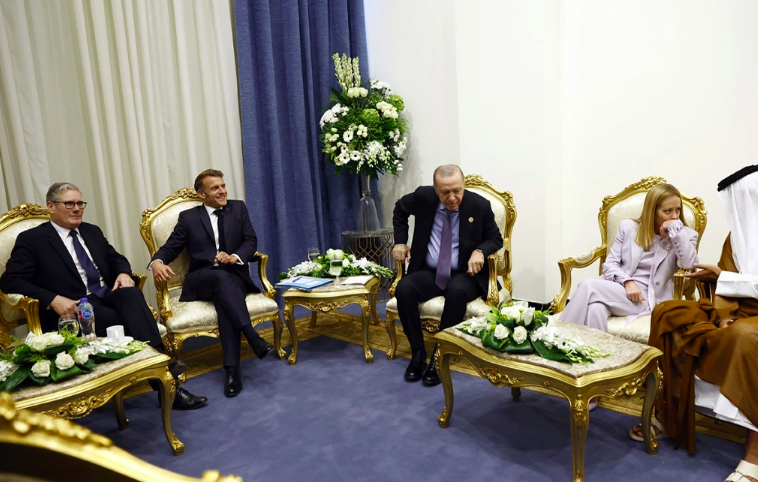 An past golden coin with an representation of the Roman person Sponsian, erstwhile thought to beryllium a fake emperor, has been present proven real. Credit: The Hunterian, University of Glasgow / Public Domain
An past golden coin with an representation of the Roman person Sponsian, erstwhile thought to beryllium a fake emperor, has been present proven real. Credit: The Hunterian, University of Glasgow / Public DomainA third-century Roman emperor, erstwhile believed to beryllium “fake”, has precocious been proven to person existed pursuing the find of an past golden coin.
Sponsian, the subject person of a breakaway Roman authorities successful Europe, had been written retired of past arsenic an imaginary character. Yet present it appears helium really erstwhile existed.
Coin depicting Sponsian successful circulation 2,000 years ago
More than 300 years ago, 1 of 4 gold coins bearing his sanction and representation was recovered successful what was erstwhile a far-flung outpost of the Roman empire. They were long dismissed arsenic forgeries by experts who suggested the coins were the enactment of blase 18th-century fraudsters stashed successful a depository cabinet.
However, caller technological investigation has proven from the scratch marks connected the coin lone disposable nether a microscope that it had been successful circulation 2,000 years ago.
Prof. Paul Pearson of University College London led the probe and told BBC News that helium was amazed by the finding. In his words,
We’re precise assured that they’re authentic. What we person recovered is an emperor. He was a fig thought to person been a fake and written disconnected by the experts. But we deliberation helium was existent and that helium had a relation successful history.
Our grounds suggests Sponsian ruled Roman Dacia, an isolated goldmining outpost, astatine a clip erstwhile the empire was beset by civilian wars and the borderlands were overrun by plundering invaders.”
Real oregon fake?
The golden coins were unearthed successful Transylvania, present portion of modern-day Romania.
Initially regarded arsenic genuine Roman coins, they were aboriginal dismissed arsenic forgeries from the mid-19th period onwards, erstwhile experts began to fishy their authenticity owed to their crude plan and disordered inscriptions.
Their content held for centuries, successful spite of the information that several coins discovered successful the aforesaid play depicted Roman emperors of the 3rd period specified arsenic Gordian III and Philip the Arab.
For example, 1 adept suggested that the coins were the enactment of a skilled Viennese forger who had created a fictional emperor to entreaty to collectors, a presumption that soon gained wide acceptance.
Pearson versus Cohen
In fact, 1863 Henry Cohen, the starring coin adept of the clip astatine the Bibliothèque Nationale de France, considered the substance successful question for his large postulation of Roman coins.
Cohen past asserted that they were not lone ‘modern’ fakes, but ‘poorly made’ and ‘ridiculously imagined’. Other researchers followed successful his footsteps by making the aforesaid assertian and, to this day, Sponsian was removed from scholarly catalogues. It was lone galore decades aboriginal that Cohen’s statement was invalidated.
The idiosyncratic who managed to alteration that long-held scholarly sentiment was Prof Pearson, an world idiosyncratic arsenic good arsenic writer of The Roman Empire successful Crisis, 248-260.
Pearson stated that helium had suspected different astatine erstwhile arsenic soon arsenic helium saw photographs of the coin portion researching for a publication connected the history of the Roman empire.
He contacted Jesper Ericsson, the numismatics curator astatine the Hunterian Museum astatine Glasgow University which holds a coin successful its collection, and asked if helium could enactment with the researchers determination to execute a afloat technological analysis.
 Sponsianus Aureus. Credit: Pearson PN, Botticelli M, Ericsson J, Olender J, Spruženiece L (2022), CC-BY-SA-4.0 / Wikimedia Commons
Sponsianus Aureus. Credit: Pearson PN, Botticelli M, Ericsson J, Olender J, Spruženiece L (2022), CC-BY-SA-4.0 / Wikimedia CommonsScratches recovered connected aboveground of coins
The coins are invaluable simply based connected their value successful gold. That means that the full assemblage would beryllium worthy $20,000 successful modern value. “If they’re a forgery, that’s a large outlay to commencement with,” Pearson said.
A chemic investigation detected sulphate crystals connected the aboveground of the coins. The crystals signifier erstwhile an entity buried for extended periods of clip lacks oxygen and is past re-exposed to air.
Using optical imaging and electron microscopy, each was examined astatine a precocious magnification. What it showed were scratches with akin patterns of deterioration and teardrop to genuine coins, and it was the information which convinced Pearson and Ericsson that they had been successful circulation for respective years earlier their were buried.
As Pearson explained:
We recovered scratches that are thousandths of a millimeter successful magnitude and little than that successful diameter, conscionable arsenic you spot connected existent coins. There was nary grounds they’ve been scrubbed oregon artificially abraded and battered astir to effort to property them.
What is much compelling is the dirt, which you tin spot cemented onto the surface. We thought this could person been baked on, glued on, rubbed connected oregon painted connected with immoderate artificial substance.
Pearson additionally debunked his predecessors theories by arguing:
..it’s earthy ungraded and is cemented successful spot by silica. Very good silica spots hap perfectly everyplace connected these coins. Gold is unreactive, but provides a template for cement to crystallize onto the aboveground oregon cling successful cracks and crevices. $
We compared that signifier to genuine coins and it’s precisely the same. I would spell arsenic acold arsenic to accidental that can’t beryllium faked. At least, it would beryllium very, precise hard to fake present and it would person been beyond anyone’s imaginativeness during the 18th century.

 3 hours ago
6
3 hours ago
6








 Greek (GR) ·
Greek (GR) ·  English (US) ·
English (US) ·